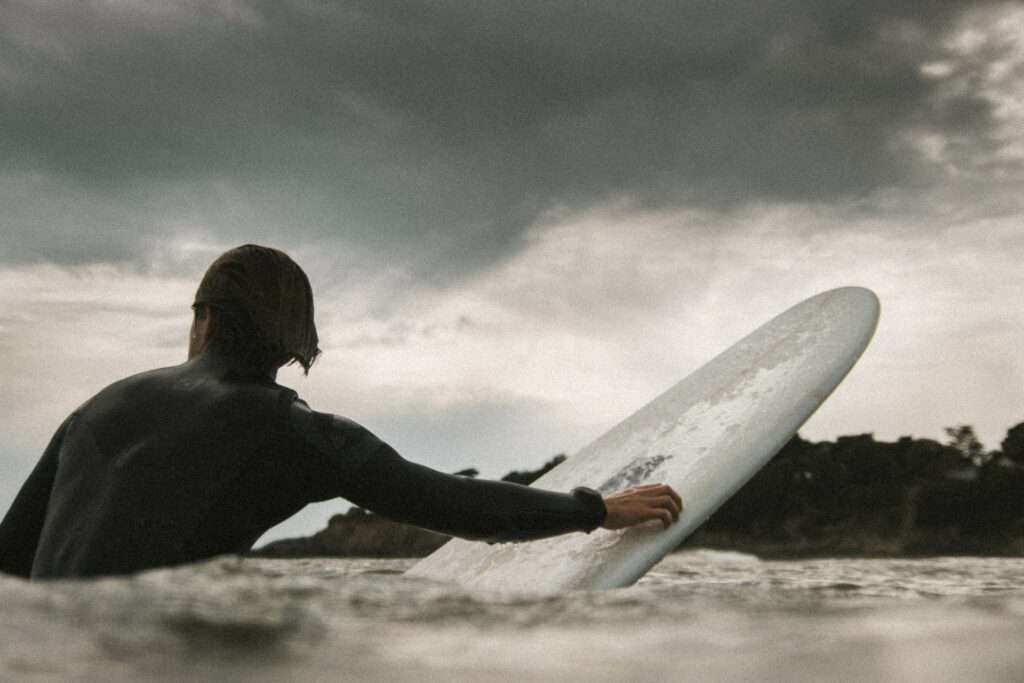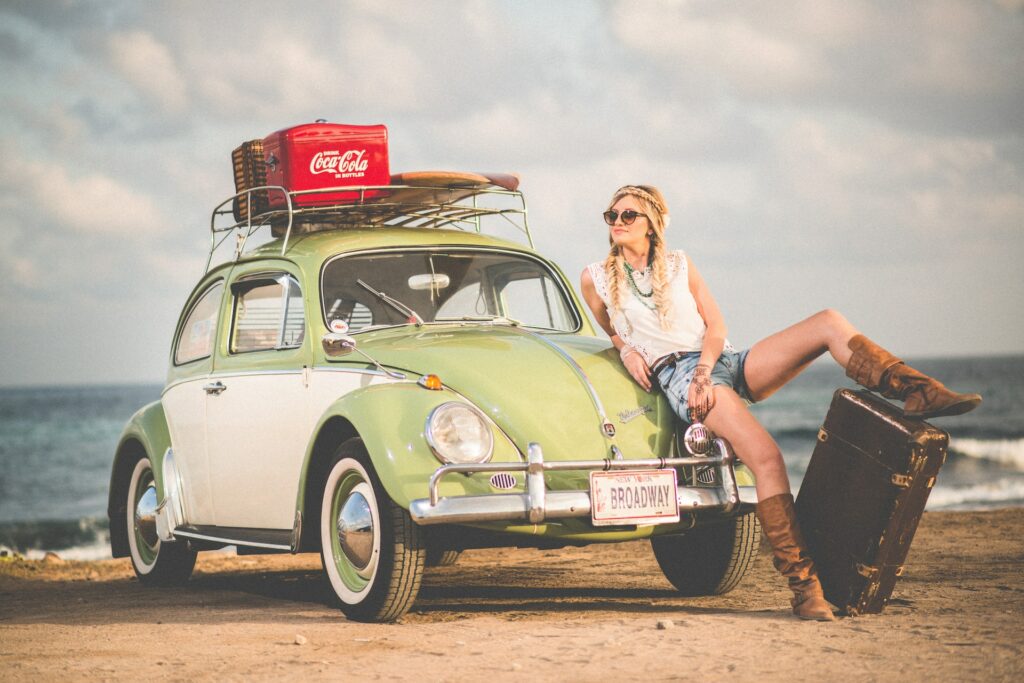Table of Contents
Hello, sun seekers and vitamin D enthusiasts! Welcome back to my corner of the digital universe, where we relentlessly pursue the answers to your most burning beauty questions. Today, we’re not just going to scratch the surface but dive into the deep end of a fascinating topic that’s been causing quite the storm in your DMs: How long does it take to tan on a cloudy day? Cue dramatic gasps!
Now, this might shock many of you, but yes, darling, the elusive sun-kissed glow can still be yours even when our main star isn’t beaming down on us with full force. Intriguing, right? How does it work, you ask? Is it a matter of minutes or hours, or is this a more drawn-out process? And what about those pesky UVA and UVB rays—should we be worried about them when the sky is overcast?
In this post, we’ll unravel these queries, shedding light (pun intended!) on the intricate dance between the sun, the clouds, and our skin. Leveraging cutting-edge research and consulting top-notch dermatologists, I provide science-backed insights to help you achieve that sun-kissed look safely—rain or shine.
So let’s defy those grey skies together and embark on this illuminating journey that will redefine your tanning approach. Stay tuned because, by the end of this post, you’ll become a walking, talking—and most importantly, safely glowing—encyclopedia of cloudy day tanning knowledge. Grab your SPF and favorite beach chair, and let’s get started!
A Peek Into the Bronze Factory: The Tanning Process
Think back to your school biology lessons, and let’s delve into the tanning process together. Here’s the refresher: It all starts with the sun’s ultraviolet (UV) radiation, causing a flurry of reactions in our skin cells. I always imagine it as a bunch of diligent, microscopic workers hustling to shield my skin. They achieve this by producing melanin, our body’s very own Sunscreen.
Whenever UV rays knock, our skin responds by amping up melanin production. This melanin absorbs and scatters UV light, acting as an internal shield against the sun’s harsh radiation. Over time, this melanin buildup results in the much-coveted tan. However, the degree of tanning is highly individual and depends on factors like the duration of sun exposure, whether you’re wearing Sunscreen, and even your genetics.
And here’s a bit of personal trivia for you: My skin tends to tan rather quickly, but I learned the hard way that excessive exposure without protection could lead to burns and long-term damage. So, always remember that moderation is key!
When Mother Nature Has Your Back: Best Weather Conditions for Tanning

When aiming for that perfect tan, the weather plays an important part. But what conditions are best for your tan? Well, that’s highly personal and depends on your skin type.
If you’re a member of the sensitive skin club, like my best friend Lily, direct sunlight for extended periods might not be your friend. Lily tends to aim for mild weather and indirect light. On the other hand, if you’re like my cousin Ethan with more resilient skin, you can tolerate more intense light. Nevertheless, protection is always necessary, regardless of your skin type.
A Silver Lining in the Clouds: Tanning on a Cloudy Day
Now, the million-dollar question: Can you tan on a cloudy day? Absolutely, yes! Those sneaky sun’s rays can still wiggle their way through the clouds. But remember, sun protection is equally crucial these days. I learned this the hard way when I spent a day at the beach on a cloudy day, thinking I was safe without Sunscreen—I ended up with a not-so-great surprise sunburn!
Remember, the cloud cover does play a role in how much UV radiation can penetrate it. A thick layer of gray cumulus clouds might protect you more than a veil of white cirrus clouds. But to stay on the safe side, always take precautions. My mom always says, “It’s better to be safe than sorry, especially regarding your skin.”
Wrapping Up
While tanning under cloudy skies might take longer than a bright sunny day, it’s still possible. I generally follow the rule of halving my usual sunbathing time on a sunny day when the weather is overcast. However, it’s crucial always to prioritize skin safety—apply your SPF, wear protective clothing, and seek shade whenever necessary. After all, a healthy tan is a beautiful tan!
So the next time you’re out on a cloudy day, remember you’re still on your way to achieving that golden glow. Patience, protection, and love for your skin should always be your go-to mantra. Happy tanning, beauties!
Patience is a Virtue: Tanning Time on Cloudy Days
You’ve probably heard the saying, “Good things come to those who wait,” and tanning on a cloudy day is no exception. It’s possible to tan when the sun is hiding, but it takes longer. Think about the day I got lost in that fascinating beach read and barely noticed the cloud cover. Result? I didn’t get the tan I’d hoped for, but I still noticed a subtle glow.
The trick is to listen to your skin. It’s telling you to be patient as the process happens slowly due to less direct UVB and UVA rays on overcast days. You might need 2-3 times as long as usual to get a noticeable tan. But remember the golden rule of sun protection: always apply Sunscreen, even on cloudy days. Remember, UVA rays—the silent skin damage—are still present.
Through the Clouds: The Sneaky UV Rays

I remember the day I explained to my friend, Clara, that UV rays are sun ninja warriors. Even when the clouds act as a barrier, these rays—particularly UVA rays—can sneak through and cause harm to your skin. Over time, this can lead to premature skin aging, wrinkles, and possibly skin cancer. Scary, right?
While cloud cover may reduce the intensity of these rays, it does not provide a complete shield. A broad-spectrum sunscreen is your best ally in this battle, even on cloudy days. I’ve made Sunscreen a non-negotiable part of my daily skincare routine, and my skin thanks me for it!
Your Cloudy Day Tanning Strategy: Maximize the Glow
Ah, the elusive goal: optimizing your tanning potential on a cloudy day. Yes, it’s challenging, but not impossible. Let’s start by understanding a few things: your skin tone, the role of melanin, and the tanning process itself.
Your skin tone is the leading player in this game. If you’re fair-skinned, like my sister Kate, you might burn more quickly, so be extra cautious. However, if you’re blessed with a darker complexion, like my friend Priya, you have some natural sun protection. But even then, you need to be smart about your sun exposure.
Next, we have melanin—the key player in the tanning process. Picture melanin as the hero of your skin story, guarding against harmful UV rays and helping to darken your skin tone. Remember my beach read-a-day? Even though the tan wasn’t dramatic, I knew my melanin was working hard to shield my skin and give it a bit of a bronze hue.
When it’s cloudy, the actual process of tanning can be tricky, as it requires more sun exposure time than usual. But a little patience, wearing Sunscreen, and staying hydrated can still help you nab that coveted tan.
So, lovely readers, don’t let a few clouds rain on your tanning parade. With a good understanding of your skin tone, the role of melanin, and a little patience, you’ll be well on your way to maximizing your tan. And remember, a safe tan is always the best tan!
Do You Need Sunscreen on Cloudy Days? You Bet!

Picture this: you wake up to a sky that’s more grey than blue, and you think, “Sunscreen? No, not today!” Sounds familiar? We’ve all been there. But let me tell you a little secret – you need Sunscreen, even on cloudy days. Remember when I went for a picnic without Sunscreen because it was overcast? Big mistake. My nose ended up looking like a ripe tomato!
Those tricky clouds can’t block all UVA/UVB rays. So, stepping outside without Sunscreen is like leaving your house in the rain without an umbrella. Let’s make it a rule, darlings – Sunscreen before we head out, rain or shine.
If your goal this season is to get that sun-kissed bronze look, wearing Sunscreen should be on top of your to-do list. It decreases your risk for sunburns and other serious skin problems and helps maintain that fabulous tan you’ve been working on.
And while you’re at it, let’s add a few more weapons to your tanning arsenal. Think tanning lotion, tanning oil, and other products specially designed for good tanning results and skin protection.
Don’t Be Fooled: Sunburns on Cloudy Days
Even on the cloudiest of days, don’t let your guard down. The sun is sneaky, my loves! Those UV rays are as potent on overcast days, but the lack of heat energy might make you feel otherwise.
Remember when my friend Sarah spent the entire day gardening without Sunscreen because it was cloudy? Yeah, not her best decision. She ended up with a painful, red sunburn.
So whether gardening, hiking or simply lounging outside, always wear Sunscreen or UV-protective clothing. An umbrella can also be an excellent accessory for those long hours under the sun.
Remember, a little caution now means a beautiful, worry-free tan later. And we don’t want a sunburn to rain on our tan parade, do we?
Cloudy Day Swim: Can You Still Tan?

Dive in, darlings, because you can still tan even when swimming on cloudy days. While the clouds may dim the sunlight, some skin-darkening UV rays can still make their way through.
Remember last summer when I went swimming on an overcast day? I thought, “No chance I’m getting tanned today.” But, surprise, surprise – I did!
As long as there’s a hint of sunlight, it’s enough for your body to produce melanin, that marvelous pigment that gives our skin its color and creates a tan.
So, even if the clouds are out, don’t shy away from taking a dip in the pool or the sea. But remember, darlings – sun protection first!
So, there you have it, beauties – the truth about tanning on cloudy days. Remember: the secret to a perfect tan is Sunscreen, patience, and a little sun-savvy. Stay glowing!
What are the best weather conditions for tanning based on skin type?
If you’re planning a tanning session, knowing your skin type and the weather conditions best suited to it can make all the difference. As a beauty expert, I always emphasize the importance of understanding your skin and what it needs. Let’s dig into this!
1. Very Fair Skin (Type I)
If you have very fair skin that freckles easily, tans minimally or not at all, and tends to burn quickly, then your best bet is tanning in the early morning or late afternoon when the sun isn’t at its peak. Look for weather that’s warm but not too hot (think 70-75°F), and always, always wear a sunscreen with a high SPF.
2. Fair Skin (Type II)
If you have fair skin that occasionally tans but burns more easily, similar recommendations apply. Choose the early morning or late afternoon hours, avoid the peak sunlight hours (10am-4pm), and make sure you’re well-lathered with a high SPF sunscreen.
3. Medium Skin (Type III)
If you have medium skin that burns moderately and tans gradually, you might have more flexibility with your tanning times and temperatures. Still, you should aim to tan outside of peak sunlight hours and always wear a sunscreen with at least SPF 30.
4. Olive Skin (Type IV)
Those with olive or light brown skin that burns minimally and tans easily have a bit more leeway when it comes to tanning. You may be able to tan during warmer weather and slightly peak sun hours, but protection should still be a priority – use at least an SPF 30 sunscreen.
5. Brown Skin (Type V)
If you have brown skin that rarely burns and tans quite easily, you can likely handle warmer temperatures and a broader range of sun exposure times. However, even though your skin may not burn as easily, it’s still important to protect it from potential damage and aging effects from the sun’s rays. Opt for a broad-spectrum sunscreen with at least an SPF of 15-30.
6. Dark Brown or Black Skin (Type VI)
With dark brown or black skin that rarely or never burns and tans very easily, you can handle a broad range of temperatures and times for sun exposure. However, don’t forget the sunscreen! While your skin may not burn easily, it can still be damaged by UV rays – an SPF of 15-30 should suffice.
In all cases, remember to hydrate and reapply sunscreen every 2 hours, or more often if you’re swimming or sweating. Regardless of skin type, it’s important to remember that tanning isn’t risk-free. Overexposure to UV radiation can lead to skin damage, premature aging, and even skin cancer. So, always prioritize protection over tanning!
Keep these guidelines in mind, and you’re all set to achieve a safe, stunning tan that’s perfect for your skin type. Stay sun-savvy, beautiful people!
Conclusion
Well, my sun-seeking beauties, there you have it! Despite those cloudy skies, you can still work on your tan while protecting your skin. It all comes down to this: Sunscreen is your non-negotiable best friend, cloudy or sunny every day. It shields you from those pesky UVA/UVB rays that could cause damage to your skin cells, helping you avoid sunburns and more severe skin issues down the line.
As we’ve seen, tanning under cloudy skies is slower, but it is indeed possible. So be patient, take your time, and remember that even on an overcast day, those UV rays are out in force – they’re just a bit more sneaky. And yes, you can get even tan while dipping in the pool on a cloudy day – so don’t skip the Sunscreen when you’re suiting up.
Sun protection doesn’t mean giving up on that golden glow – it means tanning wisely and safely. Try out different tanning products like lotions and oils to enhance your tan and skin protection, but always remember that the ultimate goal is to enjoy the sun while caring for your beautiful skin.
So, dear readers, don’t be fooled by those clouds, and always keep your Sunscreen close by. Remember these tips, and you’re all set to achieve that safe, stunning tan you’re after – even on the cloudiest days. Now, go forth, be sun-savvy, and keep glowing!
Feature image by Maciej Serafinowicz on Unsplash




